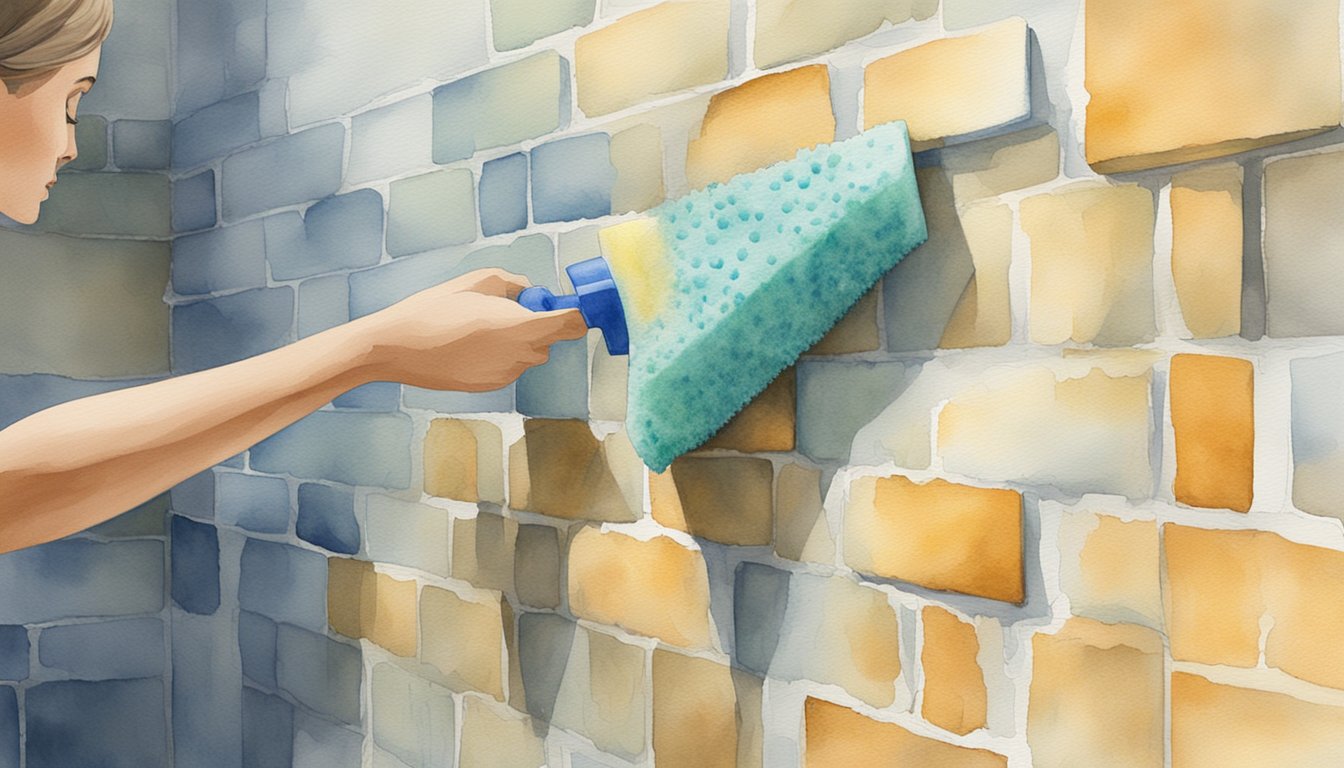Call us: (631) 270 9692
Keeping your walls clean can make a big difference in how your home looks and feels. To clean walls effectively and avoid damaging the paint or wallpaper, start by dusting them thoroughly. Use a soft cloth or a vacuum with a brush attachment to get rid of any loose dust or cobwebs.
Next, take care of marks and stains. Dampen a sponge or a microfiber cloth with a mild cleaning solution and gently scrub the spots. For tougher stains that don’t come off easily, try using an eraser-type sponge, like a Mr. Clean Magic Eraser, for a gentle yet effective approach. Be sure to wring out your sponge well to prevent water from dripping down the walls.
After you’ve removed all the marks and stains, it’s important to rinse and dry the walls. Wipe the walls down with a clean, damp cloth and then let them air dry completely. You can speed up the drying process by opening windows. Clean walls can brighten up your home and make it feel fresh and welcoming. For more detailed tips and methods, check out How to Clean Walls Without Damaging the Paint.
Preparing to Clean Walls
Before cleaning your walls, it’s essential to assess their condition, choose the right cleaning supplies, and protect your flooring and furniture. These steps will ensure you achieve the best results without damaging surfaces.
Assessing the Wall’s Condition
Start by checking your walls for any damage. Look for cracks, holes, or chipped paint that might need repairing before cleaning. Make sure to dust any baseboards and corners as well.
Sometimes, walls in high-traffic areas, especially where pets and children frequent, might have more grime. Identifying these areas will help you tweak your cleaning approach. For painted walls, ensure the paint type—glossy, matte, or textured—as this will impact the kind of cleaning solution to use.
Choosing the Right Cleaning Supplies
Gather necessary supplies before you start. A vacuum with a brush attachment can help remove loose dust and cobwebs. Use a bucket for your cleaning solution, which typically consists of lukewarm water and mild soap.
Microfiber cloths are great for wiping without leaving residue. Sponges and a gentle detergent are also useful for tackling tougher stains. For stubborn marks, an eraser-type sponge can help. If your walls are especially dirty, consider a stronger cleaner specifically designed for your wall type.
Protecting Flooring and Furniture
To avoid making a mess while cleaning, protect your flooring and furniture. Move furniture away from the walls as much as possible. Cover any large pieces that you can’t move with plastic sheeting or old sheets.
Lay down drop cloths or old towels along the base of the walls to catch any drips from your cleaning solution. Make sure to keep pets and children out of the area to prevent any accidents. Taking these precautions will help maintain a clean and safe working environment.
Effective Wall Cleaning Techniques
Cleaning walls involves several techniques to maintain their appearance. This includes dusting, addressing different paint finishes, and removing stains.
Dusting and Vacuuming Strategies
Start with dusting the walls using a vacuum with a brush attachment. Move from the top down to prevent dust from falling onto cleaned areas. You can also use a dry duster for this. Pay special attention to moldings and clean baseboards. For textured walls, a microfiber cloth can help capture more dust. Regular dusting helps maintain clean walls and reduces allergens.
Dealing with Different Paint Finishes
Different paint finishes require different cleaning methods. For latex paint, use a sponge dipped in a mild detergent solution. Wring out the sponge to avoid excess water. For oil-based paint, a solution of warm water and dish soap works well. Always test a small area first to ensure the cleaning products do not damage the paint. Washing walls with a gentle touch prevents damage.
Treating Common Wall Stains
For scuff marks and smudges, use a magic eraser. Gently rub until the mark disappears. For mildew and mold, use a solution of water and vinegar. Apply with a cloth and dry the area completely. Tough stains may require a stronger cleaner, but always test it first. Regularly treating stains helps maintain your walls’ appearance. For more tips, check out these wall cleaning techniques.
Maintaining and Protecting Walls

Properly maintaining and protecting your walls extends their lifespan and keeps them looking clean and fresh. Key aspects include preventing damage, routine cleaning, and using natural cleaning solutions.
Preventing Wall Damage
To prevent damage to your walls, be mindful of what you hang and how you hang it. Use wall anchors for heavy items to avoid cracking. Regularly dust your walls with a microfiber cloth to prevent dust buildup, which can affect paint finishes and cause allergies.
Place furniture protectors on the backs of chairs and tables to avoid marks on the walls. Be cautious with liquids; clean spills promptly to prevent stains and water damage.
Routine Cleaning and Touch-Ups
Routine cleaning is essential for wall maintenance. Clean your walls at least once a month to remove dust and grime. Use a soft sponge with warm water and mild dish soap to gently wash the walls.
For stubborn marks, you can use an eraser-type sponge. Spot cleaning is key; it helps maintain the paint color without needing a full wash. Always start at the top and work your way down to prevent drips.
Natural Cleaning Solutions
Natural cleaning solutions are effective and gentle on your walls. Mixing vinegar with water creates an excellent all-purpose cleaner that can handle everyday dirt. Baking soda mixed with water works for tougher stains and scuffs.
If you prefer a solution without any odors, use diluted vodka. These natural solutions avoid the use of harsh chemicals, protecting both the paint and your health. Regular use of these solutions can help maintain a clean and fresh environment in your home.





